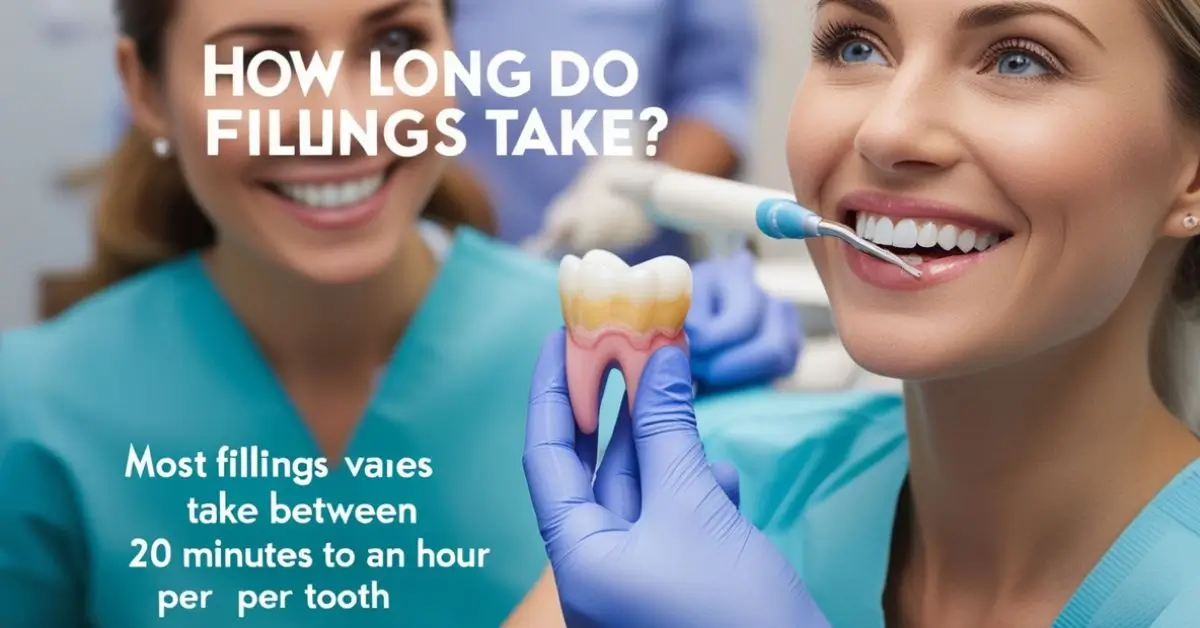Dental fillings are a routine procedure designed to restore the structure and function of teeth affected by decay or damage. One of the most common questions patients have before undergoing the procedure is, “How long do fillings take?” While the answer varies depending on individual circumstances, most fillings take between 20 minutes to an hour per tooth. This article will delve into the factors influencing the duration, what to expect during the procedure, and post-filling care to ensure a smooth experience.
Factors That Affect the Duration of a Filling
Several factors contribute to how long a dental filling procedure will take. Understanding these can help you prepare for your appointment and alleviate any concerns.
1. Size and Location of the Cavity
- Small Cavities: Smaller cavities are quicker to treat, often requiring less than 30 minutes.
- Large Cavities: Larger or deeper cavities take longer because they require more extensive cleaning and preparation.
- Accessibility: Cavities located in hard-to-reach areas, such as the back molars, might require additional time.
2. Type of Filling Material
- Amalgam Fillings: These silver-colored fillings are durable and relatively quick to place, usually completed within 30-45 minutes.
- Composite Resin Fillings: These tooth-colored fillings require a layering process, taking around 45-60 minutes per tooth.
- Gold or Ceramic Fillings: Often used for indirect fillings like inlays or onlays, these require custom fabrication in a lab, meaning multiple visits and extended procedure times.
3. Number of Fillings
- If multiple teeth require fillings, the total appointment time increases proportionally. Dentists can often complete several fillings in one visit, depending on the patient’s comfort and the complexity of the cases.
4. Patient-Specific Factors
- Sensitivity: Patients with high sensitivity may require extra care, including additional anesthesia or breaks during the procedure.
- Cooperation: Younger patients or those with anxiety may require more time for relaxation and reassurance.
The Filling Procedure: Step-by-Step
Understanding the steps involved in getting a filling can help demystify the process and set realistic expectations for the appointment length.
1. Numbing the Area
The first step involves administering local anesthesia to numb the area around the affected tooth. This ensures a pain-free experience. Depending on the patient’s sensitivity, numbing can take anywhere from 5 to 20 minutes.
2. Removing Decay
The dentist uses specialized tools to remove the decayed portion of the tooth. This process typically takes 10-20 minutes but may take longer for larger cavities or those in difficult locations.
3. Cleaning the Tooth
Once the decay is removed, the dentist cleans the cavity to eliminate any bacteria or debris. This step is crucial for preventing infection and ensuring the filling adheres properly.
4. Placing the Filling Material
- For amalgam fillings, the material is shaped and packed into the cavity.
- For composite fillings, the dentist applies the material in layers, hardening each layer with a curing light. This meticulous process takes slightly longer but results in a natural appearance.
- Indirect fillings, such as gold or ceramic, require the dentist to take an impression of the tooth, which is then sent to a lab for fabrication. Temporary fillings may be placed until the permanent filling is ready.
5. Shaping and Polishing
After placing the filling, the dentist shapes it to match the natural contours of your tooth. The surface is then polished to ensure smoothness and comfort. This step usually takes around 10-15 minutes.
Comparison of Filling Materials and Their Placement Times
Here’s a handy comparison chart summarizing the differences in materials and how they affect the time required for the procedure:
| Filling Material | Placement Time per Tooth | Durability | Aesthetic Appeal |
|---|---|---|---|
| Amalgam | 30-45 minutes | Highly durable | Silver, noticeable |
| Composite Resin | 45-60 minutes | Moderately durable | Matches tooth color |
| Gold (Indirect) | Multiple visits | Extremely durable | Gold, noticeable |
| Ceramic (Indirect) | Multiple visits | Durable | Matches tooth color |
Tips for a Smooth Appointment
- Communicate Concerns: If you’re anxious about the procedure, let your dentist know. Many dental offices offer sedation options for added comfort.
- Plan Your Schedule: Allocate enough time for your appointment, considering the possibility of delays or extra treatment.
- Follow Instructions: Adhering to pre-appointment guidelines, such as avoiding food before anesthesia, can streamline the process.
Aftercare and What to Expect Post-Filling
Post-filling care is crucial for ensuring the success and longevity of the procedure. Here’s what to keep in mind:
1. Numbness
The effects of anesthesia typically wear off within 2-3 hours. Avoid chewing on the treated side until the numbness subsides to prevent accidental injury.
2. Sensitivity
Mild sensitivity to hot, cold, or pressure is common for a few days after a filling. This is especially true for composite fillings. Sensitivity should diminish as the tooth adjusts.
3. Oral Hygiene
- Brush gently around the filling and floss regularly to maintain oral health.
- Use toothpaste designed for sensitive teeth if discomfort persists.
4. Follow-Up
Contact your dentist if you experience prolonged pain, sensitivity, or an uneven bite. They may need to make minor adjustments to the filling.
Frequently Asked Questions
How Long Will a Filling Last?
- Amalgam fillings can last 10-15 years with proper care.
- Composite fillings typically last 5-10 years but may require touch-ups sooner.
- Gold and ceramic fillings are the most durable, lasting up to 20 years.
Can I Eat After a Filling?
- For composite fillings, you can eat as soon as the numbness wears off.
- For amalgam fillings, it’s best to wait 24 hours to allow the material to harden fully.
Do Fillings Hurt?
- The procedure itself is pain-free due to anesthesia. Mild soreness or sensitivity afterward is normal but should subside within a few days.
Additional Resources
For a visual explanation of the dental filling process, consider watching a video on the topic. Many reputable dental clinics and educational platforms provide step-by-step guides that can help demystify the procedure.
Watch a Dental Filling Procedure Explained on YouTube (Search for videos with trustworthy sources and positive reviews.)
Conclusion
The time required for a dental filling depends on various factors, including the size and location of the cavity, the material used, and individual patient needs. On average, you can expect a single filling to take 20 minutes to an hour. Being informed about the process can ease anxiety and help you prepare for your appointment. By maintaining good oral hygiene and attending regular check-ups, you can ensure the longevity of your fillings and overall dental health.
If you’re considering a filling or have questions about your dental health, consult your dentist for personalized advice. Remember, taking care of your teeth today can save you from more extensive treatments in the future.












